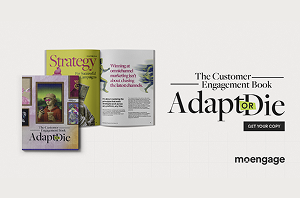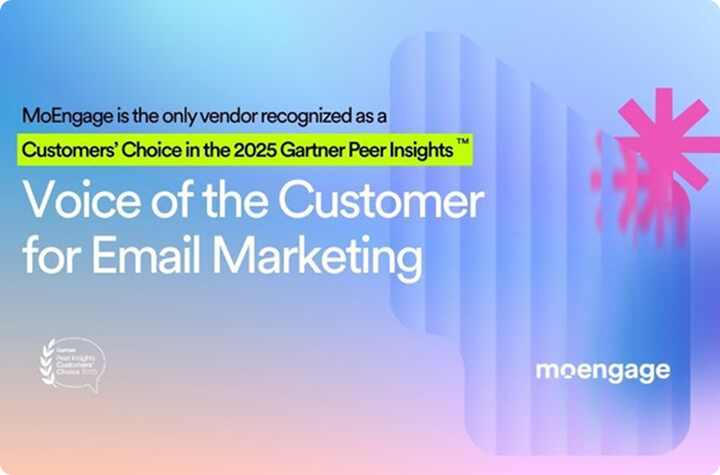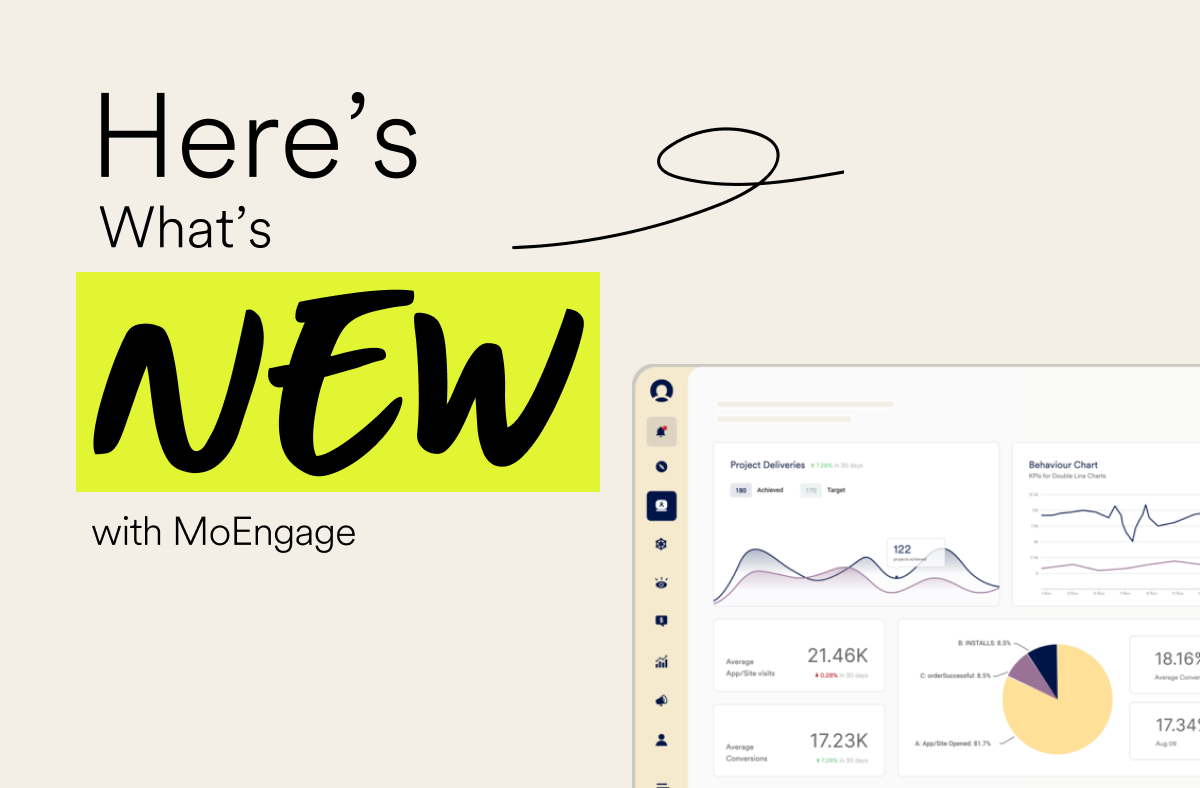How to Increase Email Open Rate + Formula to Calculate
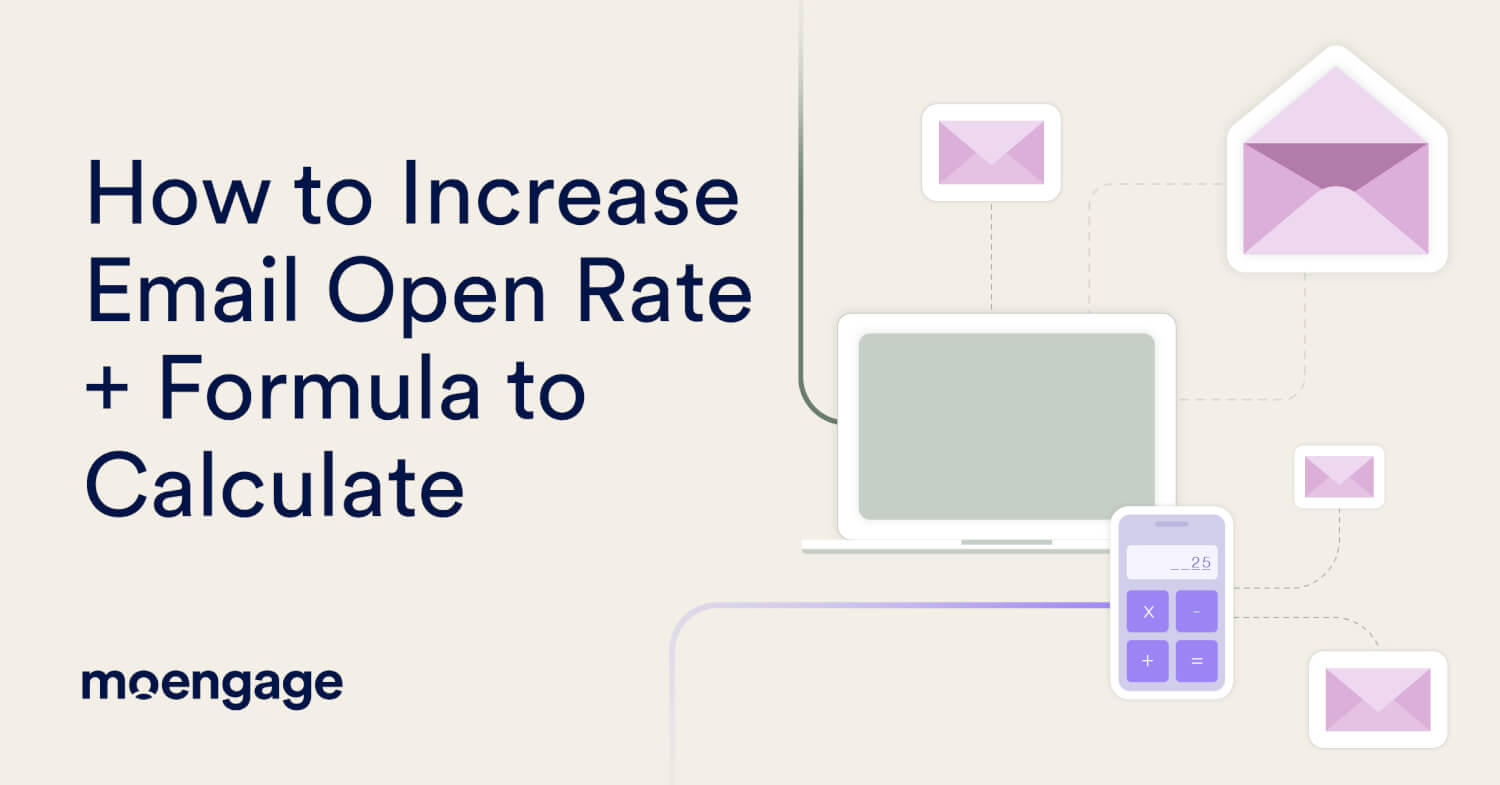
Reading Time: 15 minutes
You’ve crafted an engaging, enticing email marketing campaign, you’ve successfully targeted the right segment, and you’ve crafted eloquent copy text to boot. In short, the email is sure to elicit a click and result in a conversion. But what if your customer never ends up seeing it at all?
The fact is, even the best email does your brand no good if your customers never open it (or go on to make a purchase). Fortunately, there are ways to improve your email open rates and make sure your campaigns actually reach your customers.
In this article, we’ll explain how to calculate your email open rate, help you distinguish your open rate from related metrics like your click-to-open and click-through rates, and cover the twelve most important things to do to increase your email open rates.
What Is an “Email Open Rate” in Marketing & What Does It Mean?
The email open rate is the percentage of customers that open an email out of the total number of customers that received the email. Brands use it to analyze the performance of their overall email marketing strategy. In particular, it helps brands measure the engagement of their individual email campaigns.
It’s an extremely useful metric for marketers to understand the early stages of their email marketing efforts. It helps them isolate issues with emails to improve the exposure of their email marketing campaigns, determine which types of email campaigns to prioritize (or abandon), and allocate marketing budget according to what’s driving the greatest impact.
How To Calculate Email Open Rate: Formula
The email open rate is calculated by dividing the number of opened emails by the total number of delivered emails and then multiplying by 100 to get the percentage.
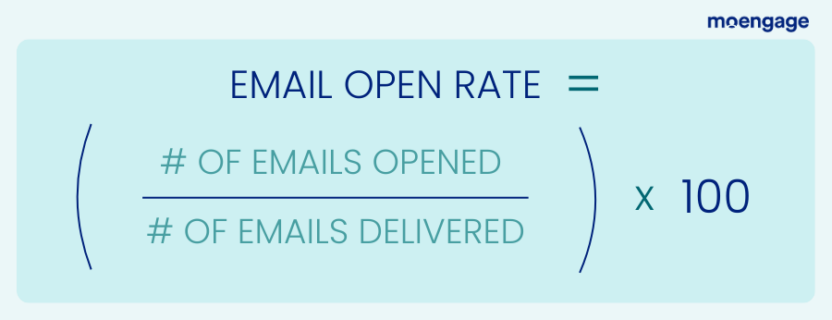
Most brands measure this based on the actual number of messages that were successfully delivered rather than the total number sent. By removing bounced emails from the equation, brands are able to better understand actual customer engagement with the campaign. The delivery rate then allows them to separately understand how successful their campaign was at reaching their audience.
Unfortunately, calculating your open rate is just the beginning; now you have to use that metric to draw meaningful insights and conclusions about your performance. Luckily, there are industry benchmarks that allow you to compare yourself to your peers. We cover these below.
What is a good open rate for email as a benchmark?
Typically, a decent email open rate is above 20%, while a good email open rate is above 25% or 30%.
Naturally, brands turn to industry benchmarks to measure their performance and see how they compare. While this is obviously a good tactic, brands need to keep in mind that a good (or bad) open rate is extremely circumstantial; open rates can be drastically different across industries, businesses, use cases, and email types. They can also fluctuate (for better or worse) seasonally or during holidays.
According to MailChimp’s report, the average email open rate (across all industries) is 35.63%. However, there is a lot of variability based on the industry, with a difference of 16.99% between the highest (43.97%) and the lowest (26.98%) open rates.
In our own study of 312.4 million emails, we determined industry-specific email marketing benchmarks to help brands determine whether their email open rates are good or bad. The average email open rate fluctuated from 17.65% in Lifestyle Industries to 30.58% in Retail and Ecommerce.
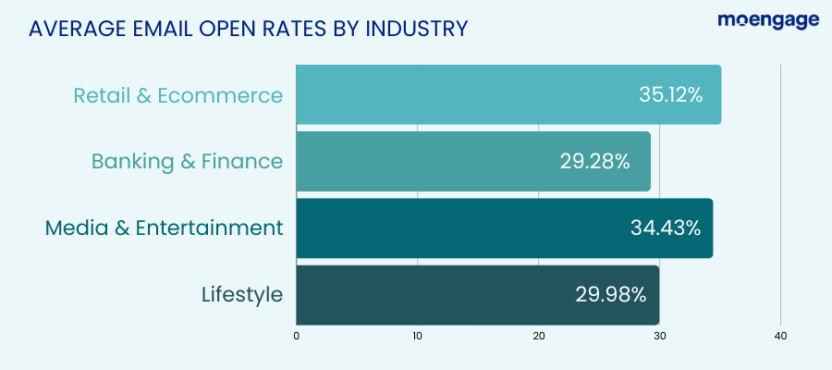
While using benchmarks to analyze performance and set attainable goals is a best practice, it’s important to use benchmarks with caution and continuously A/B test to identify what works best for you.
What’s most critical is that brands always know what their email open rate is and continuously work toward improving it. More than industry and competitor benchmarks, look at your historical performance to determine how good your email open rates are.
Also, when choosing benchmarks, make sure you choose a benchmark that’s as close as possible to your own situation, and be careful to avoid using benchmarks that aren’t suitable to your industry, business model, or unique audience.
Email click-through rate vs click-to-open rate
Both the click-through rate (CTR) and click-to-open rate (CTOR) indicate the number of customers that click a link in an email they’ve opened. The difference is that the CTOR compares this to the number of people who opened the email, whereas the CTR compares it to the total number of emails delivered.
Marketers often confuse and conflate the open rate, click-through rate, and click-to-open rate, but they are separate metrics marketers use to understand email marketing engagement.
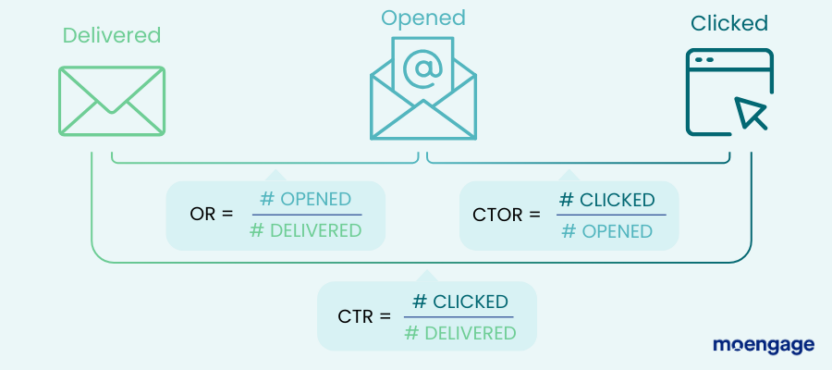
Here’s an example to illustrate this:
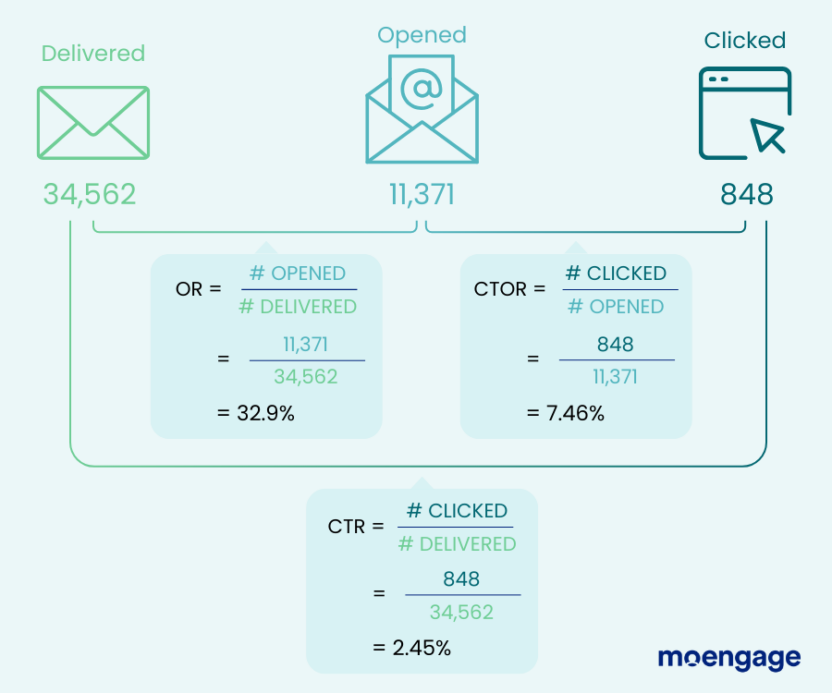
All three of these metrics — open rate, click-through rate, and click-to-open rate — help brands understand and measure the performance of their email marketing campaigns.
What affects email open rates for your campaigns?
There are several factors that influence open rates, including customers’ past experiences with your emails, their loyalty to your brand, and the contents of the emails themselves. However, there are certain factors that directly impact the email open rate, even when there is no existing relationship between the customer and the brand.
- Subject lines: Since this is used to summarize the subject and contents of an email, it’s the main hook that draws customers in and motivates them to open an email in the first place. It’s often considered one of the most influential factors for email open rates.
- Preheaders: This snippet allows brands to provide context about the subject of the email, and should be used to provide additional information or further motivation to open an email.
- Sender name or email ID: Customers are often apprehensive about opening emails from sources they don’t recognize or trust. The email ID or sender name displayed can significantly impact whether a recipient will ever open it.
- Delivery timing: Timing is crucial in email marketing, as it not only dictates whether the email is seen in the first place, but also whether it grabs the attention of the recipient and results in a conversion.
- Message frequency: Message frequency and cadence can have a major impact on email open rates. Brands must ensure they aren’t sending too many or too few emails.
- Your audience: Email marketing success is all about reaching the right customers with the right message. Matching your campaigns to different customer segments and personalizing them for individual customers will ensure your emails reach your customers.
- Deliverability: Ultimately, you want emails to reach your customers’ inboxes. Maintaining a strong sender reputation will help ensure your emails don’t end up in spam.
- Analytics: Your campaigns are only as reliable as the data they’re rooted in. It’s critical to use detailed, omnichannel analytics when making adjustments to your email campaigns.
The truth is, that each of these elements plays a part in the email open rates. Brands must account for all of them when devising their email marketing strategy. It’s also important to remember that certain factors will be more important for different industries and brands.
Are there reasons why email open rates are unreliable?
Marketers widely use email open rates to analyze the performance of their email marketing campaigns, and they certainly provide valuable insights into outreach and interest. However, there are some limitations to email open rates, primarily based on the collection and accuracy of the initial data.
Email open rates have a few shortcomings that can make the data slightly unreliable or incomplete:
- Measurement limitations: Since open rates are tracked by pixels or dynamic content that loads in an email, a failure for this image to load (whether that’s a technical error or intentionally blocked by the receiver) means the email open won’t be properly tracked. This can lead to inaccuracies in measurement and an underrepresentation of open rates.
- Inability to quantify actual engagement: While an email open rate does tell you whether customers are opening your emails, it doesn’t tell you whether they are clicking any links, taking further desired actions, or even reading it. Unfortunately, this means that open rates provide very limited details about the actual level of engagement a customer has with an email.
- Inconsistency across device types and email providers: Different device types and email service providers (ESP) handle image-loading differently, which leads to inconsistencies in how email opens are tracked on different device types or email clients. This means that an ‘open’ can be fundamentally different for different users, making it hard for brands to use this data in a meaningful way.
- Restrictions from data privacy rules: Modern changes to data privacy rules and regulations (like the GDPR and CPRA) outline compliance requirements for companies that collect consumer data. Increasingly, this requires customers to opt-in to data tracking, significantly limiting the brand’s ability to track things like email open rates.
- Apple’s Mail Privacy Protection: Apple’s new Protect Mail Activity feature will protect the privacy of email users so that senders can’t extract personally identifiable information when recipients open an email. This makes it impossible for brands to accurately determine open rates for Apple Mail users, impacting the quality and reliability of their overall data. While this is one of the first iterations of its kind, other providers may follow suit, further restricting marketers’ access to email open rate data.
White it’s true that brands can’t rely too heavily on email open rates to understand email engagement, it’s an invaluable tool for understanding email outreach. As long as brands are conscious about how they use the metric and what insights they use it to assess, it can provide teams with clear signals about the success of their email marketing campaigns.
As with other metrics, brands shouldn’t use the email open rate on its own. It (like other customer engagement metrics) is a single piece of the puzzle. For this reason, brands should make sure to use the email open rate as one metric for understanding the performance of their email marketing campaigns.
How to Increase Email Open Rates: 12 Tips
So, how do you actually increase email open rates?
Similar to the content within the emails, brands must prioritize delivering their message in a clear and concise manner that inspires customers to take action. Rather than solely focusing on what is written in the email, brands should extend this approach to the elements influencing customers before they open an email. This includes the subject line, preheader, strategic scheduling of the messages, etc.
Even these small elements are an extension of your brand. Maintain a consistent tone of voice and ensure your brand’s unique style shines through, even in a customer’s email inbox.
Below, we cover twelve of the most important strategies for increasing your email open rates.
1. Write a compelling email subject line
Despite the old adage, people really do judge a book by its cover. And they do the same thing with their emails. In fact, 33% of people open emails based solely on how catchy the subject line is.
As the name suggests, the subject line is the place where marketers can summarize the contents of the email. Brands use this small space to not only summarize the contents of the email, but also convey the tone, style, and value of the email.
Really, email subject lines are the hook that draws in your customers. They’re critical for ensuring your emails gain exposure and reach your target audience.
To catch reader attention and increase engagement, marketers need to write email subject lines that boost email open rates. That means crafting subject lines that cut to the chase, add an element of humor, appeal to your customers’ emotions, add an element of FOMO, and are personalized to your audience’s interests and preferences.
Here are a few key things you should keep in mind when crafting your subject lines for greatest impact:
- Keep It Simple Stupid (K.I.S.S.): You’ve got really limited space, so you want to be direct. Don’t overcomplicate it, and instead cut to the chase and provide as much information as you can (in as short a space as possible).
- Let your brand voice shine through: Despite the fact that you have a limited amount of space, you want to use every available character to get your brand voice across.
- Emphasize value with numbers: Including actual dollar or percent amounts on discounts and offers is a great way of emphasizing the value customers will find if they open your email.
- Be creative and innovate: Don’t be afraid to try new things. Get creative, add a bit of humor, and even use emojis. You can always ditch ideas that don’t work; but you may find a hidden gem that fits your brand’s style and resonates with your audience.
2. Craft informative and enticing preheaders
The subject line isn’t the only thing customers see before they open your emails, there’s also the preheader.
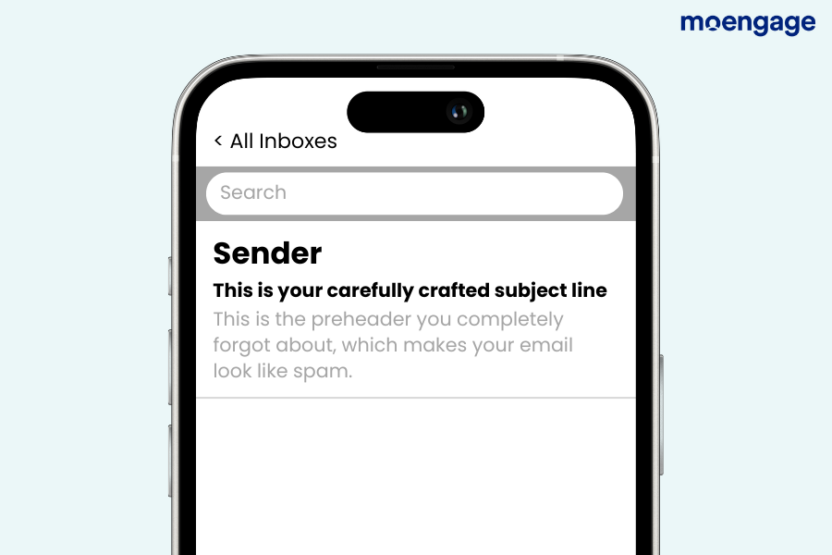
This is the copy text that appears immediately below your email’s subject line. In some cases, brands choose to preview some of the content by showing the start of the email copy.
What’s important is that brands are always aware of what’s being displayed to their customers prior to a click and that they’re taking advantage of every available opportunity to urge readers to open the email. Write preheaders that are specifically designed to catch the reader’s attention, expand on the email contents, and elicit a click.
Brands will want to use many of the same strategies here that they do in their subject lines, adding elements of humor, integrating numbers that speak directly to the value a customer will get, and embodying your brand’s voice and style.
3. Include the sender’s name in the subject line
Customers know that emails sent from ‘[email protected]’ or ‘[email protected]’ are from a generic sender. These email IDs do nothing to build a relationship between the customer and the brand and make the customer feel like another number on their email marketing list.
Brands that add a personal touch by using a personalized name in the sender field (or in the subject line) foster a personal relationship with their customers, remove apprehension, and boost open rates.
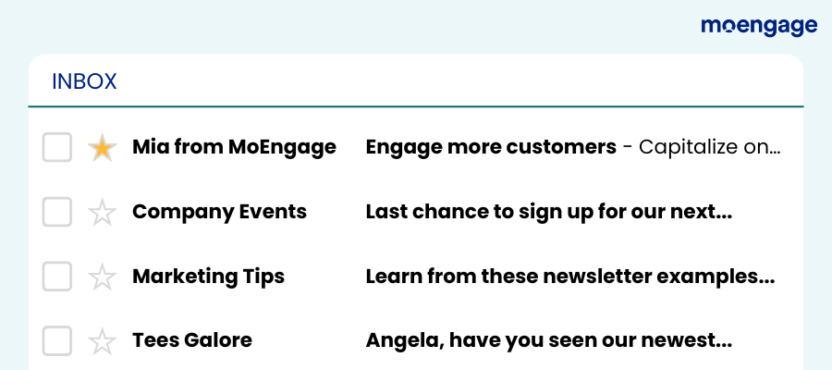
Recipients are far more likely to open emails that come from senders they trust. To increase your email open rate, it’s important to use an easily identifiable sender name and email ID and maintain that in all of your emails so your customers know the source of the email and what to expect
4. Optimize emails for deliverability
If your emails never reach your customers’ inboxes, they will never see them (let alone open them).
It’s incredibly important to optimize your emails for deliverability. Brands will want to make sure they are a reliable sender to increase receivability. Spamming emails can easily get you in a customer’s spam filter, but using extremely poor email practices could land you there even on your first email. This could be because of clickbaity, spammy content or subject lines, an untrustworthy email sender, or a questionable email service provider (ESP).
Also, refrain from sending image-only emails, as this can drastically increase the size of your emails, as well as their potential to be marked as spam. In general, limit image usage to keep your email file sizes reasonable and optimize them for better load times.
5. Focus on personalization
Personalized experiences and campaigns have become integral for email marketing in recent years. According to research from Dynamic Yield, 71% of consumers said they would respond favorably to an email that they thought was created uniquely for them.
Brands already develop dynamic content that serves customers personalized recommendations, feature announcements, and product updates. But email marketers need to put that same level of detail into personalizing the elements of the email that lead it to be opened in the first place, including the subject lines and preheaders.
6. Nail your timing
Timing is everything in marketing. If your emails don’t arrive at the right time, your customers will never see them — or the contents will already be outdated by the time they do.
So, what’s the best time or day to send an email? The truth is, there is no single answer. Each industry, business, and email type will be different. However, according to our own research, Monday is typically the best day to send emails for Retail & Ecommerce brands (based on conversion rates), Friday is the best day for Banking & Finance brands, and Thursday and Saturday are the best days for Media & Entertainment brands.
Brands will also need to pick the best time to send emails to different customer segments. For example, a fast-food restaurant will want to send emails at times when customers are likely to eat or place an order. Similarly, if they are operating a limited-time sale, it’s essential that these emails are no longer sent after the sale is no longer active.
Similarly, a retail brand that is promoting an in-store sale over the weekend will likely want to send periodic emails ahead of time promoting the sale, an email to let the customer know when the sale starts, and then an email reminding the customer on the last day of the sale.
Brands will also need to adjust timing based on the customer segment their targeting. For example, a father of two who works a 9 to 5 job is more likely to order food close to dinner time. They’d likely want emails prior to leaving work so they can order for pickup on their way home. An ideal time for them could be 3 pm to 4 pm. Alternatively, a university student who commonly orders pizza after a late night of studying (or partying) may want emails in the evening. An ideal time for them could be from 8 pm to midnight.
Top brands constantly A/B test email campaigns to analyze how different delivery times impact their email open rates. They then use this data to personalize the timing of email deliveries and better target customer segments. Using past customer engagement data, brands are able to better personalize the timing of messages not only for specific customer segments but also for individual customers.
💡 MoEngage’s Best Time to Send (BTS) feature uses an AI engine — Sherpa — to study past customer behavior so it can optimize email delivery times for best results.
7. Find the perfect send cadence
Email delivery isn’t just about nailing the timing, it’s also about perfecting the frequency that you send emails.
Like delivery timing, there is no universally correct answer. Each industry, business, and email type will have different ideal delivery frequencies. For example, most customers expect to receive more emails from Starbucks than they do from a car dealership.
The ideal delivery frequency will also change for different customer segments; some customers will want regular, routine communication, while others will find this overwhelming and obnoxious (potentially causing them to churn). Brands that treat all their customers the same will often find that many of their emails don’t ever reach their customers’ gaze.
Brands should also remember that cadence is dependent on the subject, contents, and urgency of the emails they send. If major regulatory changes affect a customer’s financial accounts, a rapid influx of informational and support emails will likely be extremely valuable (rather than overwhelming) for the customer. However, a retail brand spamming a sale will likely not see the same reception or response.
Again, what’s most important is that brands A/B test different message frequencies and consistently analyze their email analytics to try to improve their send cadence and maximize engagement.
8. Maintain email list hygiene
Managing an email list requires regular and rigorous upkeep.
Every year, nearly a quarter of a company’s contacts become obsolete, outdated, or unusable. And as more time passes, you’re sending more emails that simply aren’t reaching your actual audience.
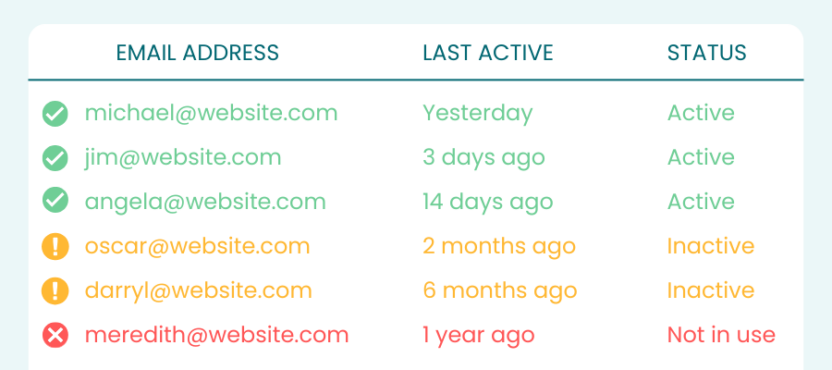
Building a hygienic email list yourself (rather than buying one) is the healthiest way to develop one. Sure, it’s the best way to meet data compliance requirements and maintain the security of your customers, but it’s more than just an ethical concern; it also directly impacts your open rates.
Brands need to cleanse their email lists periodically by analyzing email clicks, monitoring the hard and soft bounces, and verifying older email subscribers to avoid denting their sender reputation. They’ll also need to segment their customer list so they can perfect their outreach strategies, send the right emails to the right customers, and boost open rates.
Maintaining a clean email list helps brands get the most value from their email marketing campaigns because each email is going to a valid recipient that is likely to engage. This increases your return on investment, which can suffer as your email list isn’t maintained.
9. Optimize emails for mobile delivery
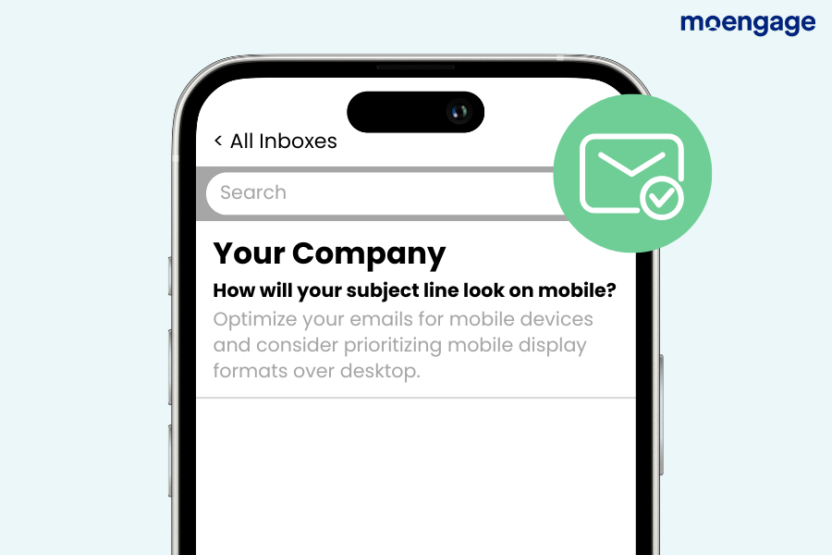
Modern consumers don’t just open emails on their desktops; more often than not, they access email from their mobile devices. According to HubSpot, nearly half of all email opens occur on a mobile device.
Since mobile is being increasingly used for email consumption, it’s critical that email marketers optimize their email campaigns for mobile devices. They need to make sure they understand what the experience looks like on mobile devices, and potentially prioritize mobile display formats over desktop ones when needed.
10. Implement the double opens strategy
When it comes to email marketing, persistence makes the difference.
To be clear, we don’t mean spamming generic messages to your customers, as that can actually have the opposite effect. However, you shouldn’t give up if your customer doesn’t open an email on the first pass. Revisit these customers and resend the email (after waiting at least a couple of days) with minor modifications: a new and improved subject line and a different delivery time.
This requires minimal effort and gives your brand a chance to squeeze some more value out of your email marketing campaigns. Just be sure to filter out customers who have engaged with the first email sent so you don’t annoy them.
11. Introduce automation
In general, email marketing is incredibly challenging to do at scale, and that’s no different when it comes to optimizing for better email open rates. Because of its sheer scale, 58% of marketers agreed that of all channels, email relied most on marketing automation for success.
While automation can be applied to many elements of your email marketing process, it’s particularly useful for increasing email open rates because it’s used to automate message delivery and subject line optimization. Using marketing automation for your email campaigns is incredibly important for growing effectively at scale and maximizing open rates.
12. Conduct regular A/B testing
Not everyone will respond the same to the same email, whether it’s because of the subject line, timing, or frequency.
In email marketing, A/B testing allows brands to test different variations of the same email. This means they can alter the subject lines, delivery timing, message cadence, and contents to see which messages receive the greatest engagement (and result in the most actual conversions). Brands can test different formats for their subject lines, experimenting with copy that ranges from formal writing to slang with emojis.
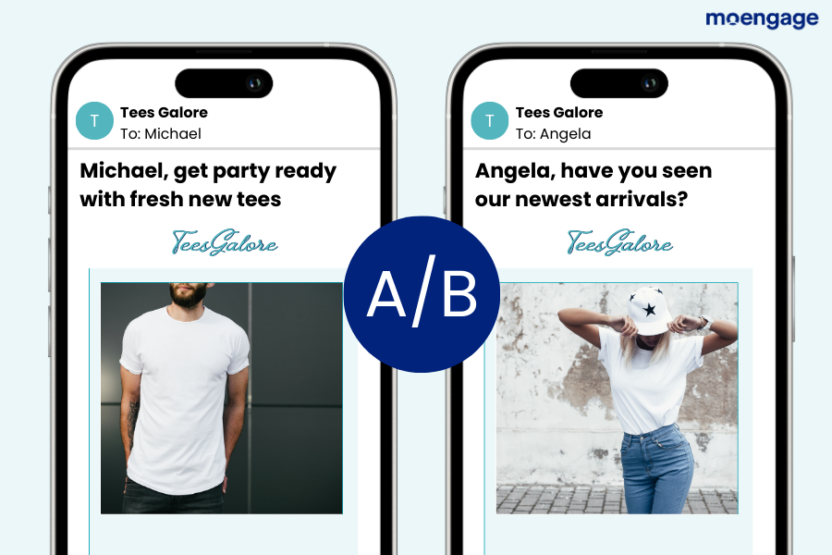
By A/B testing their emails, brands can better understand email open rates and analyze customer engagement. This enables them to better target customers and elicit better email open and engagement rates.
How To Improve Email Open Rates with MoEngage
While there are many different strategies brands can use to maximize email open rates in their particular industry, one of the most important things is to take a customer-centric approach. This ensures that every aspect of your email (from the subject line to the preheader to the actual content) speaks to your audience and entices them to click.
Beyond that, it’s incredibly important to personalize your emails based on your customer’s past behavior and current preferences. Brands also need to use robust email analytics to optimize and improve their performance. It’s critical that email marketers continuously test and improve their email marketing strategies and effectiveness.
MoEngage helps brands build email marketing campaigns that resonate with their customers. We empower brands to segment customers, predict customer behavior, automate marketing efforts, and provide intelligent insights that lead to quality improvements. This allows brands to create email lists that effectively target their customers and execute email campaigns at scale.
Rather than relying on a point solution for your email marketing, MoEngage’s Cross-Channel Marketing Platform allows you to integrate all channels seamlessly with an omnichannel approach. With robust omnichannel data, brands can get a full view of their customers and accordingly improve specific channels like email to make them resonate better.
Schedule a demo today to learn how MoEngage can help you ensure that more emails reach inboxes and make the impact you want on your customers!

